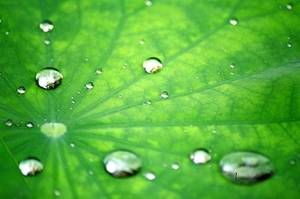 A surface has been designed that stays drier that even through possible- but it turns out nature got there first!
A surface has been designed that stays drier that even through possible- but it turns out nature got there first!
For a surface to stay as dry as possible, water droplets need to bounce off it in the shortest time. A team from Boston University and MIT used a high speed camera to watch a drop bounce off a hydrophobic surface, and saw that it bounced symmetrically- it hit the surface, spread out, and then recoiled towards the centre before leaving the surface again. This means the centre of the drop stays still whilst the rest is moving.
They wondered if they could make the drop recoil faster by using the liquid in the centre - and to do that they would have to make it bounce asymmetrically. They designed a surface with ridges in it, which make part of the droplet thinner. This thin part recoils faster, so breaking the drop into small droplets, and decreasing the time it is in contact with the surface. Where the droplet hits the surface is important- when it lands directly on the ridge the contact time is shortest.
The lotus leaf has long been the gold standard for water-repellent surfaces, but it turns out there are surfaces in nature that use this technique and are even better. The wings of the Morpho butterfly and the leaves of the nasturtium plant both have ridges or veins which help keep them dry.
This could have important impacts for materials scientists. Molten tin drops are able to bounce off these surfaces before solidifying. This suggests that they could be useful for surfaces exposed to freezing rain, to prevent ice forming on them, which is particularly important for aeroplanes.
- Previous World Toilet Day
- Next False memories









Comments
Add a comment